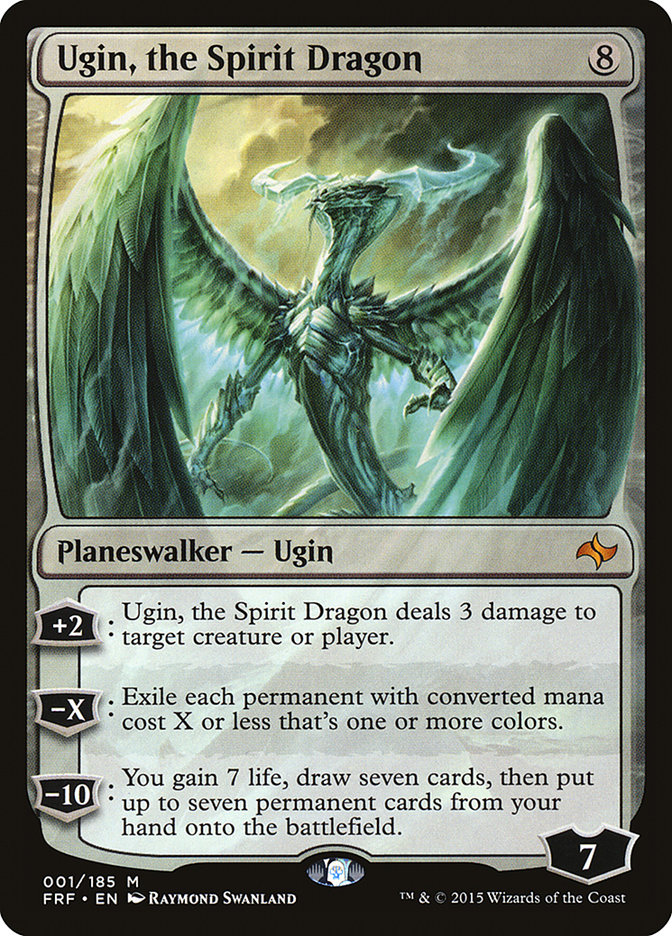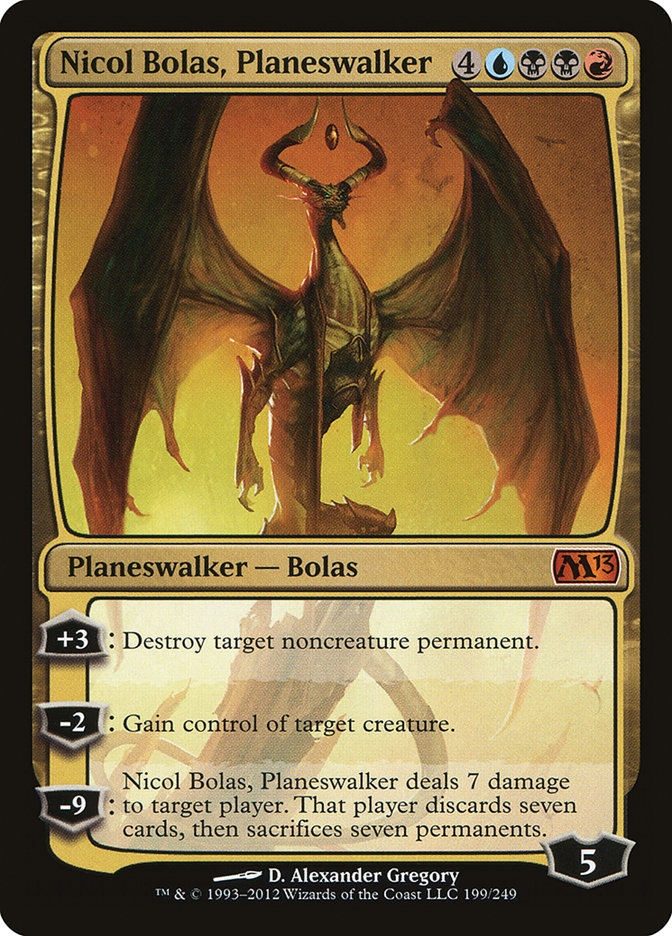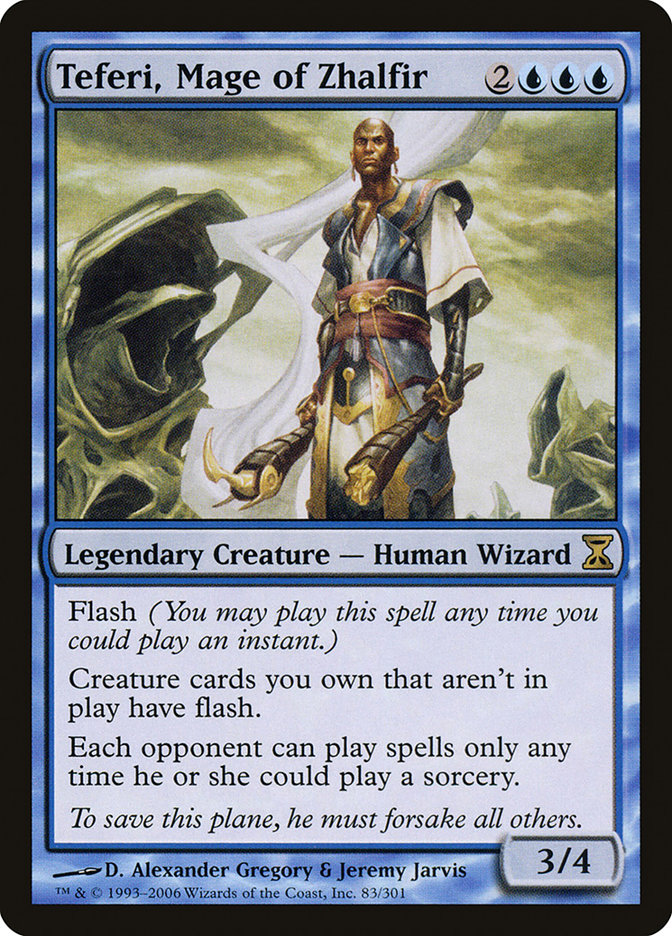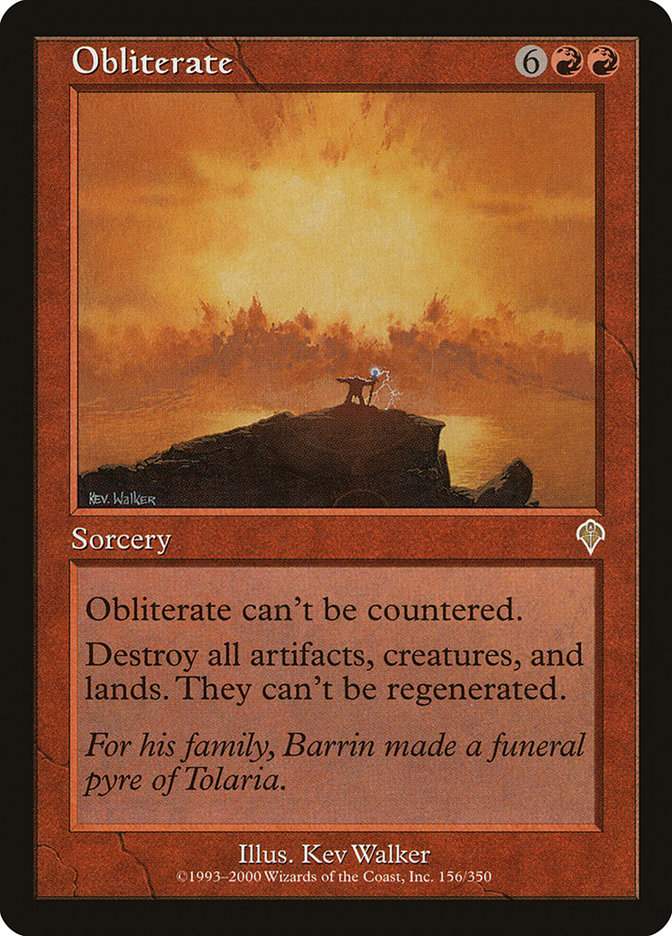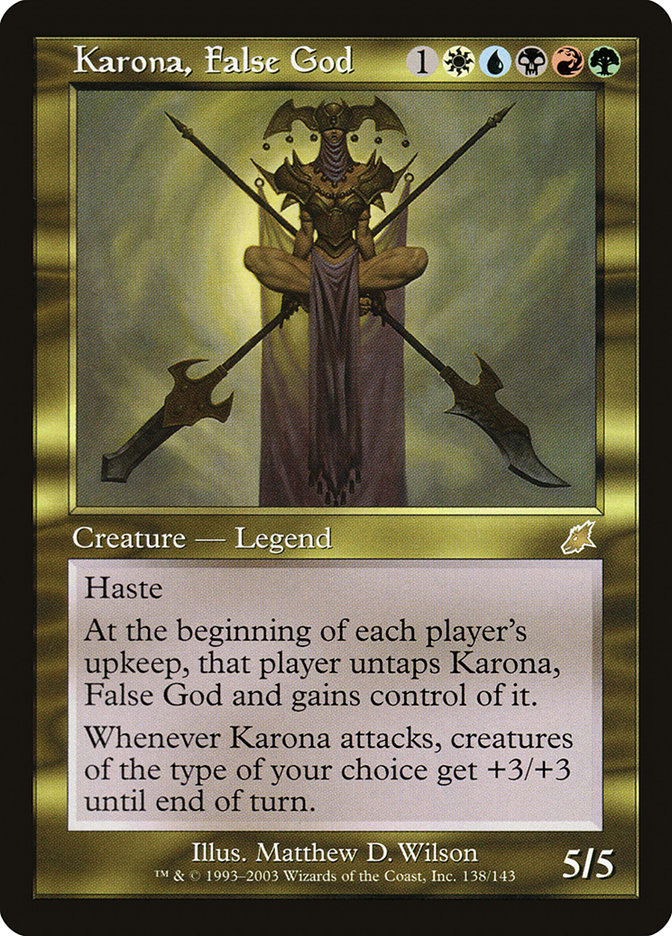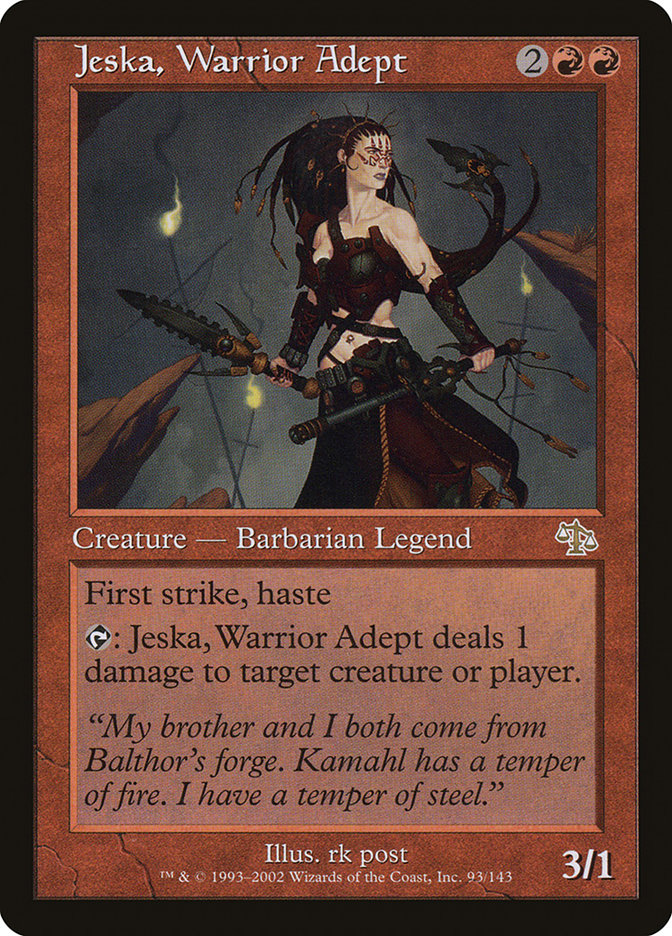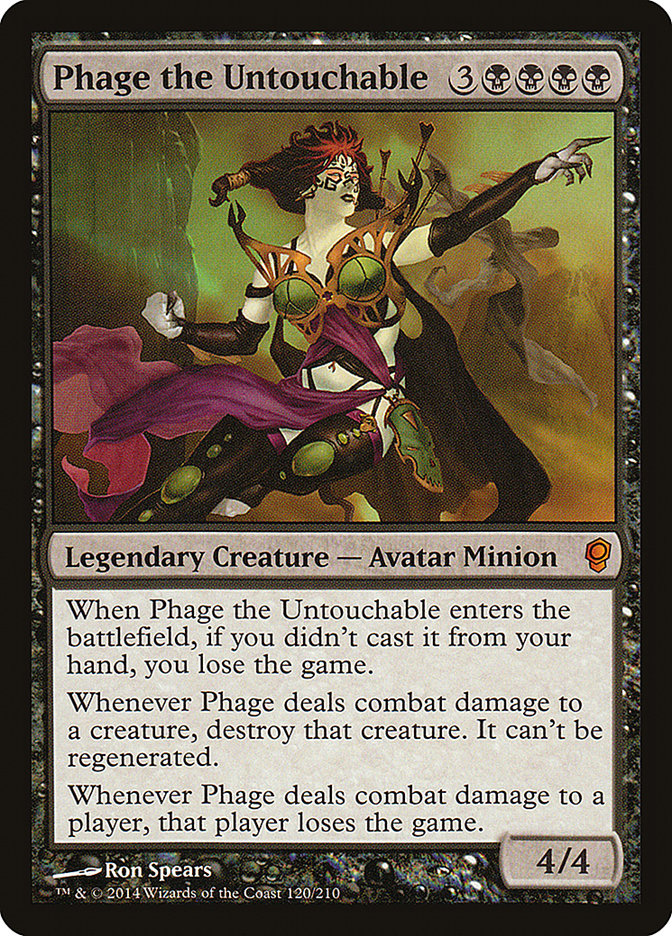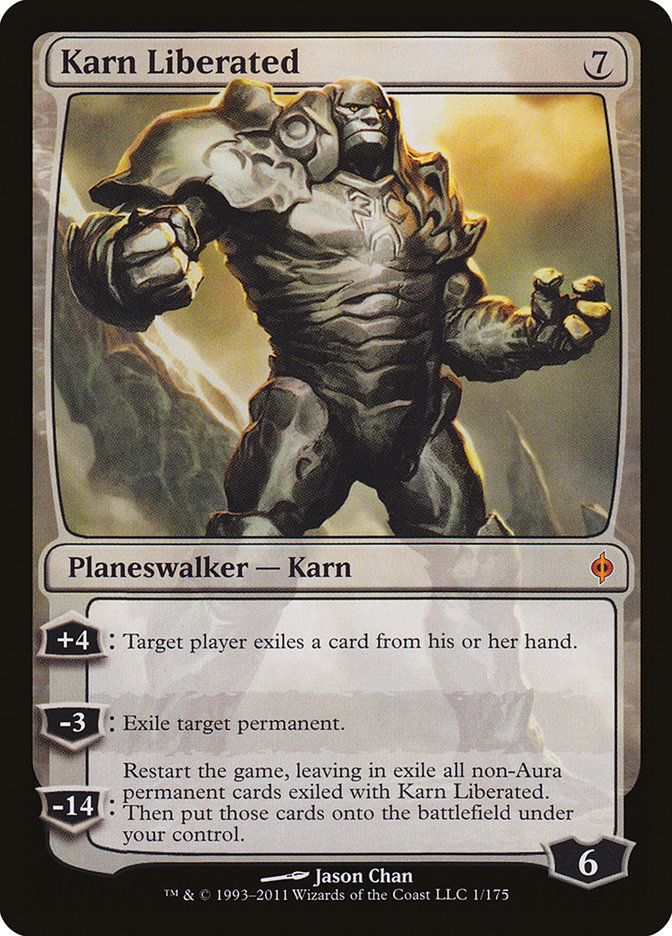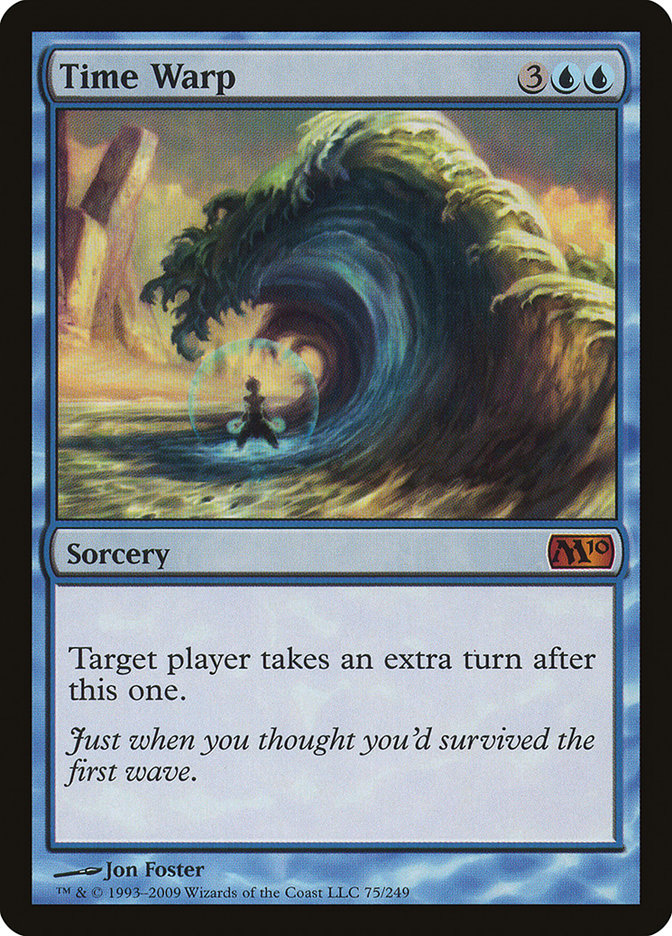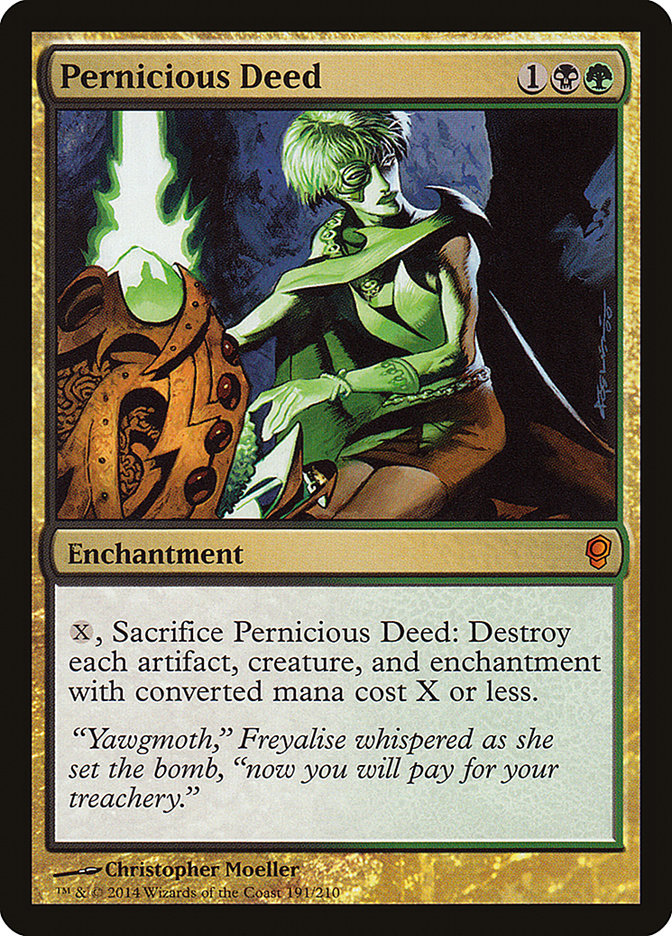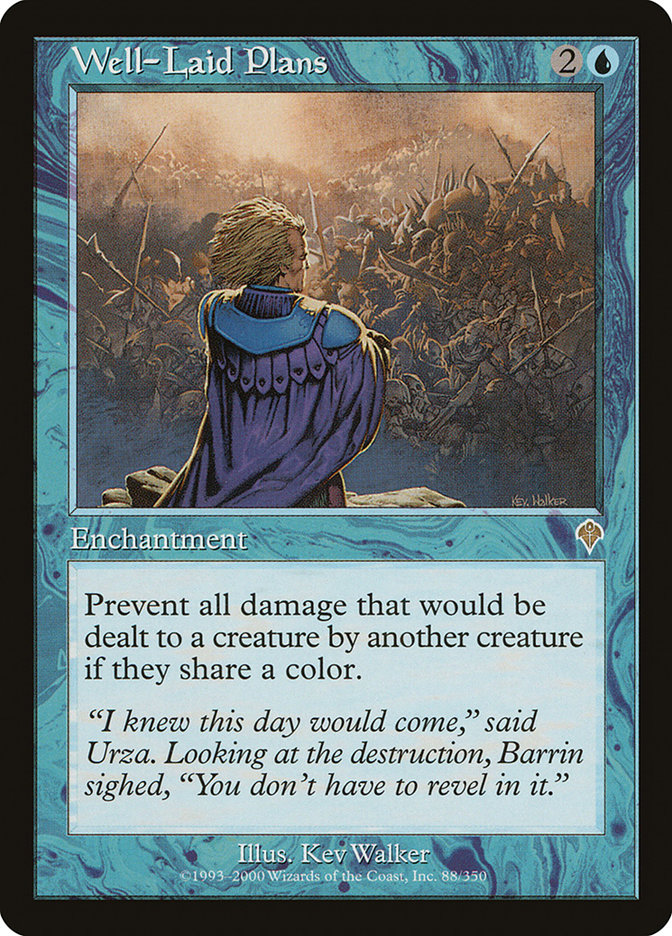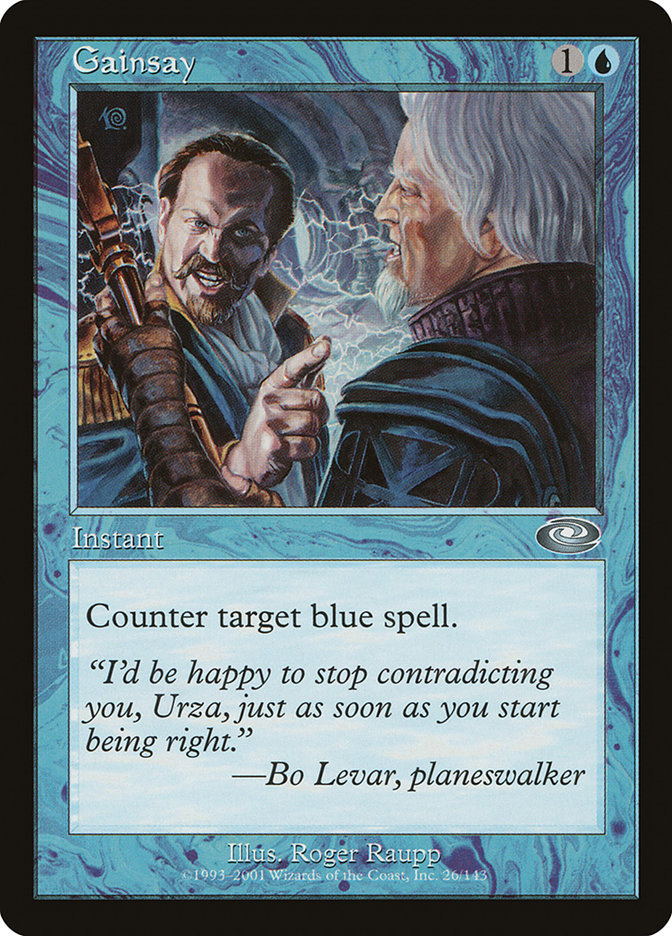After much speculation and teasing, Sarkhan’s Great Big Leap Back in Time is upon us. With ” Journey to the Nexus” he made the big leap after a
considerable period of being tormented with Ugin’s voice, and in ” A New Tarkir of Old” he’s free of that voice and
exploring Tarkir minus 1280 years, aka Tarkir with Dragons, aka That Time When Ugin, the Spirit Dragon and Nicol Bolas, Planeswalker Brawled and Ugin Got
Turned into the Bones Seen on Ugin’s Nexus (or TTWUtSDaNBPBaUGTitBSoUN, as I shall not refer to it in the future).
On Doug Beyer’s Tumblr Page, A Voice for Vorthos, he answered a salient question about one complication of
going back so far in time: did Sarkhan go back pre-Mending? The answer was yes, and Mr. Beyer gave a
brief rundown of what The Mending was and why it was so important.
I’m not satisfied with a brief paragraph, so for this article I’m going to take a look at The Mending, what it meant for the game at the time, and what it
could mean as Magic goes back in time and reforges some fates.
If you already know all about The Mending, stick around for my prose. If not, welcome to the Vorthos parade. I’m the dude with the baton.
Waiting for the Mend to Come…
When it happened, The Mending was tremendously controversial. Today, I’d say a majority of Magic’s players don’t even know what it is.
As explained in the Magic novels of Time Spiral block, specifically the Future Sight novel, the great big magical brouhahas of yore created an
imbalance in the Multiverse that led to “rifts” where the usual mana bonds were impaired or severed. Examples of rift-points include Teferi’s phasing-out
of various landmasses, such as Jamuraa, to protect them from Phyrexian invasion (an approach seen on Teferi’s Moat and other cards); the disastrous
time-travel experimentation at the Tolarian Academy and Barrin’s later Obliterate spell; and the post-Apocalypse destruction of Karona, False God.
The rifts threatened the integrity of Dominaria and would have ripped the plane apart if not stopped. As Dominaria is the center of the Multiverse, the
ripple effects would have wrecked all subsequent planes in turn, whether or not anyone on them had ever heard of Dominaria!
As seen on the card Teferi, Mage of Zhalfir, the planeswalker Teferi gave up his spark to seal a rift he had caused. Other planeswalkers suffered the loss
of their sparks or death in the effort to mend the rifts, including Lord Windgrace (the
original anthropomorphic cat planeswalker) and Jeska, who went from Jeska, Warrior Adept to Phage the
Untouchable to one of the three components in Karona, False God to planeswalker cruising the Multiverse with Karn.
Pieces of past lives.
Even Nicol Bolas participated in the rift-healing; no Multiverse would have meant nothing to rule and no place to live! True to form though, he sacrificed
another planeswalker, the black mana-aligned Leshrac.
Jeska’s sacrifice was the last, and it triggered the final healing process of the Multiverse, the Great Mending. Not only a healing, the Great Mending also
was a reckoning of sorts as the planeswalker spark changed into something far different…and far weaker.
In the transitional period between Time Spiral block and Lorwyn-Shadowmoor block*, Wizards announced the creative decision behind the Great Mending and its
consequences. Rather than the effectively immortal super-powered plotters of early Magic who schemed for millennia, they would become much less powerful:
still mages, still capable of traveling between planes, but now subject to the normal lifespans and physiological needs of their species…with the
potential for magical modification, of course, but they had to work for it instead of having it granted automatically. The act of planeswalking itself also
would take considerable effort, unlike the previous near-instantaneous travel.
* Based on Wizards’ product timetables — novels aren’t written overnight, nor card sets created — the final decision to power down planeswalkers must
have been made at least a year before the publication of the
Future Sight novel
in April 2007. The mention of “planeswalker” on the Future Sight printing of Tarmogoyf, plus Mark Rosewater’s note that the first planeswalker cards
would’ve been in Future Sight had they been ready, is further evidence. All things considered, while Wizards hasn’t revealed the actual date when the
final decision came down, I’d be shocked if it hadn’t happened by the end of 2005.
An elder dragon like Nicol Bolas might retain decamillennia of spell-lore, but instead of immortality he’s stuck with a (slowly) ticking clock. Liliana
Vess, accustomed to youthful looks as immortal as herself, got hit hard and made deals with demons to get her goodies back. When Sorin Markov kvetched
about having to feed in “Sorin’s Revelation,” the having to part is new; Sorin is millennia old himself and would recall a time when he would feed vampirically only when he wished, but in recent
years that’s become a compulsion rather than a pleasure.
The Story
The decision to power down planeswalkers was rooted in storytelling, on the theory that it was hard for players to connect to the travel-on-a-whim,
breathing-why-bother, plotting-over-millennia planeswalker characters of yore. There was considerable negative reaction at the time, including a few written
and verbal grenades launched at then-Magic Creative doyen Brady Dommermuth, who’d written a rather involved article about The Mending and the changes to
the planeswalker spark. (While calling the new version of planeswalkers “neowalkers” seemed fairly neutral to me, “Bradywalkers” was an uncalled-for
personal insult.)
It’s been more than seven years since that happened though, and while some members of the old Vorthos guard still hold a torch for the souped-upUrza Planeswalker and his ilk, the massive and successful acquisitions push that kicked in around Lorwyn-Shadowmoor block
means that for many current players, Jace Beleren and the like are planeswalkers, and a figure like Lord Windgrace is a relic at best. The post-Mending planeswalkers seem here to stay…except
when Magic decides to travel back…in…time (dun dun dunn)!
Also keep in mind that for a period of five years, old-school planeswalkers and their machinations were nearly nonexistent in the story the cards told.
After Apocalypse and cards like Pernicious Deed blew up the old storyline, the following blocks were Odyssey (a much “smaller” story restricted to one
continent on Dominaria and the travails of mortals), Onslaught (which brought in planeswalkers eventually in the books, though you’d never know it from the
cards), Mirrodin (turns out Karn was behind everything, but you wouldn’t know it from the cards), Kamigawa (planeswalkers didn’t touch the story, though
Tamiyo came from there), and Ravnica (sealed off from the rest of the Multiverse for millennia).
Time Spiral, in retrospect, was the Woodstock of old Magic: a loving gesture that proved not to be the
start of a golden age but a death rattle for what it saluted, with many more people claiming to have been there than actually went.
So did the change work out? Looking back, I’d say yes, with certain caveats. I didn’t and don’t believe that someone like Urza Planeswalker was impossible
to connect to; as long as a being experiences emotions, there’s a thread. Perhaps it comes down to the old ” Batman” versus “Superman” argument: who’s more
interesting, the mortal non-superpowered dude with issues or the superpowered dude with his own issues?
I’m more “Superman” in my tastes myself, but I don’t find Batman boring at all. On the other hand, the mass audience taste, particularly in the comic
book/science fiction/fantasy field, seems decidedly slanted toward lesser beings, ambiguity, and grit. The black-and-white simplicity of such
speculative-fiction narratives as The Lord of the Rings, Atlas Shrugged, andStarship Troopers (the book, notthe movie) has given way to the gray-and-gray morality and hard choices found inA Song of Ice and Fire, the video gameBioShock, and Shadow Ops.
Even that’s a bit of a canard though; Urza Planeswalker may have been the protagonist, but by the end he was far from unambiguously good.
Urza: thousands of years old and kind of a jerk.
It’s also worth noting that out of three Big Bads in the current Magic multiverse, two of three have their roots in “old story,” Nicol Bolas and New
Phyrexia. (Or as I call it in my grouchier moments, “Nu Phyrexia,” in the vein of “nu metal.” Have some
second-major-album Linkin Park for old times’ sake.)
Without making a relative value judgment between old stories and new, I can say that I’ve found a number of new-planeswalker tales fascinating and
worthwhile. “Dreams of the City,” for instance, is a little jewel I
overlooked when it came out, and the first movement of ” Flight of the White Cat” is a rewarding character study.
Fate Reforged and its time travel, however, offer the chance to tell a pre-Mending story with pre-Mending planeswalkers, and two ancient draconic
planeswalkers at that. I doubt Creative passed it up.
Looking for the Answer
There’s a lot as yet unanswered about what will happen in Tarkir’s past and how the story will go. For starters, what will Sarkhan’s (in-tale) power level
be? Will his planeswalker spark go up to pre-Mending power or will he be stuck at his old level, and thus, at a staggering disadvantage compared to the
likes of Ugin and Nicol Bolas? Even if Sarkhan gets a super-spark, he has to contend with the whole “mortal human lifetime to learn stuff instead of
millennia” thing.
Is Sorin Markov going back in time too? If so, what advantages or disadvantages will he have? Will he be down a millennium of experience but super-sparked,
experienced but Mending-spared, or Sorin, Vampiric Superstar?
Why did Doug Beyer’s
post about time travel affecting Tarkir only…mostly
not set my mind at ease in the slightest?
There’s a lot to be seen as far as Fate Reforged’s story goes and what ripple-effects it will have across the planeswalker characters it touches: those who
never lived to see The Mending, those who never knew anything else, and those who’ve experienced both sides.
Let’s enjoy the ride.


